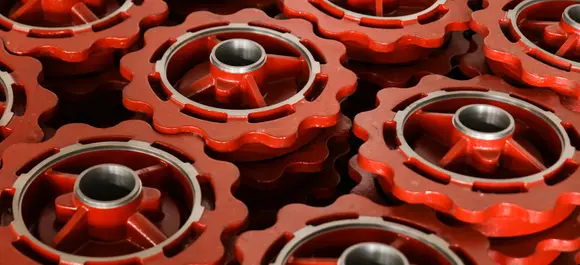Mobile:+86-311-808-126-83
Email:info@ydcastings.com
aluminium billet casting
The Process of Aluminium Billet Casting
Aluminium billet casting is an essential process in the production of various aluminium products, which are widely used across multiple industries, including automotive, aerospace, construction, and consumer goods. This casting technique involves transforming molten aluminium into solid cylindrical shapes, known as billets, which can then be further processed into extrusions or other forms.
The process begins with the selection of raw materials. Primary aluminium is often sourced from alumina via the Hall-Héroult process, which reduces aluminium oxide in electrolytic cells. Recycled aluminium can also be used, making the process more sustainable and cost-effective. The purity of the aluminium is crucial as it significantly affects the quality of the final product.
Once the raw materials are secured, the melting process commences. The aluminium is melted in a furnace, typically an induction or reverberatory furnace, at temperatures around 660°C (1220°F). Careful temperature control is essential to ensure that the aluminium is fully liquefied and that any impurities are minimized. During this phase, metallurgical additives may be introduced to enhance certain properties of the aluminium, such as strength and corrosion resistance.
aluminium billet casting

After the aluminium is melted, it is poured into a casting mold, which is designed to shape the molten metal into the desired billet form. The most common method for aluminium billet casting is the direct chill (DC) casting process. In this method, the molten aluminium is poured into a water-cooled mold. The rapid cooling solidifies the aluminium quickly, forming a billet that can typically range in diameter from 5 to 20 inches, with lengths that can exceed 30 feet.
Cooling is a critical aspect of the casting process, as it influences the microstructure and mechanical properties of the finished billet. Proper cooling ensures a fine-grained structure, which is essential for achieving the desired strength and ductility. Once the casting is completed, the billets are removed from the molds and subjected to further cooling before being cut to length.
After the billets have been cut, they are often subjected to aging treatments to improve their mechanical properties. This aging process allows for the steel to attain its optimal strength and hardness, making it ready for subsequent processing. The finished aluminium billets are then shipped to manufacturers for further processing, such as extrusion into profiles, forging, or machining into specific components.
In summary, aluminium billet casting is a vital process that serves as the foundation for producing aluminium products used in various applications. Through careful management of materials, temperature control, and cooling processes, manufacturers can create high-quality billets that meet stringent industry standards. The continued innovation in casting technologies further enhances the efficiency and sustainability of aluminium production, allowing for the reuse of materials in a world increasingly focused on environmental conservation. As industries evolve, aluminium billet casting will remain a cornerstone of lightweight, durable, and versatile aluminium products.
-
Why Should You Invest in Superior Pump Castings for Your Equipment?NewsJun.09,2025
-
Unlock Performance Potential with Stainless Impellers and Aluminum End CapsNewsJun.09,2025
-
Revolutionize Your Machinery with Superior Cast Iron and Aluminum ComponentsNewsJun.09,2025
-
Revolutionize Fluid Dynamics with Premium Pump ComponentsNewsJun.09,2025
-
Optimizing Industrial Systems with Essential Valve ComponentsNewsJun.09,2025
-
Elevate Grid Efficiency with High-Precision Power CastingsNewsJun.09,2025











